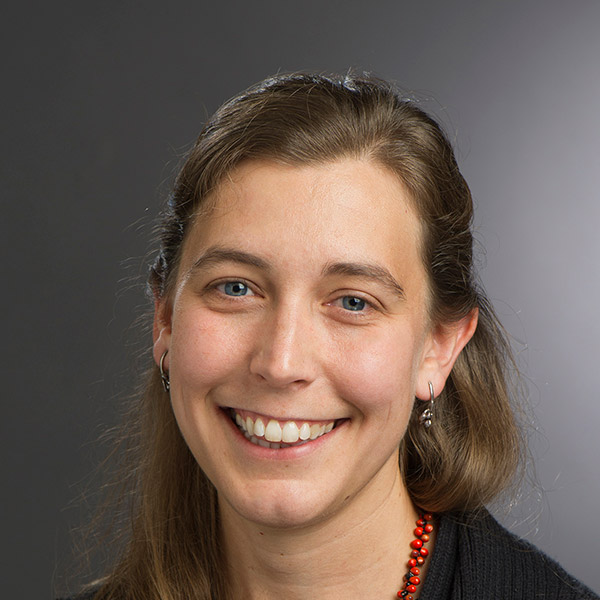Sarah Brownell

Faculty Highlight: Sarah Brownell is an alumna of RIT and a lecturer in KGCOE and SOIS, teaching Multidisciplinary Senior Design, Engineering and the Developing World, Wicked Problems, and Grand Challenges.
Read her perspective on a few critical thinking questions….
1. How do you teach applied critical thinking?
In all of my classes, I use problem and project based learning to teach critical thinking. In some classes we start with an open ended problem that has no “right” answer and students work in teams to develop and defend their own resolution to the problem. For example, this year we are focusing on issues related to water rights, supply, and quality in the Wicked Problems and Grand Challenges courses. In other classes we work directly with customers to resolve more specific problems that they face in their non-profit, community organization, company or research. All the courses utilize problem solving and design tools that help students critically evaluate and improve their work. I think of the tools as a work-out program to build the skills of critical thinking. The more times we do the work-out, the better our skills become. We also apply the tools to the work of others, using case studies and peer reviews. Responding constructively to others’ work helps prepare students for the professional world. In addition, it prepares them to provide intelligent critique of ideas in general—the job of all of us as engaged citizens. Ideally students begin to see that their ideas only get better and more viable as they adapt them to critique and concerns from different points of view.
2. Why do you think applied critical thinking is important in your domain?
Engineering is the domain where designers utilize scientific discovery to create technology for the benefit of society. That technology will interact with the both the natural environment and with social, cultural, economic, and political systems. In the past, many engineering solutions intended to address important human problems generated new, unforeseen issues, because the problems were viewed as only technical in nature instead of as part of a complex system. While we can’t predict all the consequences of new technologies, the more work we do up front to consider the risks and impacts, the better we can design solutions that work in the context of social and environmental systems. The world has become highly interconnected in a short period of time, and as ideas are replicated, they can have large impacts—global scale impacts—for better or for worse. Sometimes ideas are replicated before the impact of the problems they create is fully known. Because of the scale and speed at which we now generate technological change, the engineering discipline (among others) must change the way it thinks about problems and solutions. We now know that our hardest and most critical problems exist in the context of complex adaptive systems that are difficult to model and predict. Working with the other disciplines to better understand and adapt solutions to these systems (without causing major new problems) is one of the main challenges of engineering moving into future. The simple problems have been solved; wicked problems are our future.
3. Can you share a story where quality applied critical thinking was key to your success?
Before coming to RIT, I lived and worked in Haiti for four years. The goal of the organization I co-founded there was to introduce ecological sanitation to Haiti. Initially we followed the implementation models recommended by sanitation experts. However, as I heard feedback from the Haitian masons and public health educators we had hired and from those who managed, emptied, and used the toilets, I became sure that this model was flawed. Together with these “experts” from all walks of life, we noticed that sanitation was not just about improving water quality and public health, but also about dignity, social status, convenience, ability to afford a capital investment, skillsets, space, policy, and lack of home ownership—among other issues. Seeing sanitation as part of a larger social, economic, environmental, and technical system allowed us to propose something novel, the Ecolakay sanitation service. EkoLakay has since become a growing social enterprise in Cap Haitien and thrives by continuing adapting its model to the needs and challenges on the ground.
4. How do you use critical thinking in other areas of your life outside of RIT? And any last critical thoughts?
In my courses, I gain critical thinking skills while my students do. They teach me. I do try to apply what I’ve learned teaching to decisions I make in my life. As an engineer interested in human development, I always look at technologies designed for the developing world with a critical eye. Often the ones that get the most hype in the developed world are least likely to succeed on the ground. I also carefully evaluate which organizations I donate to and volunteer for, looking for sustainability. However I recognize that some efforts of caring and empathy are difficult to make sustainable, at least from a financial perspective. So I seek programs and ideas that have value in the currencies of the human spirit: in dignity, self-actualization, community, hope, empathy, and love. Through these critical lenses of human spirit I evaluate my own work at RIT, for my family, and for my community. If I am not promoting dignity, self-actualization, community, hope, empathy, or love, then what is the point of this work?